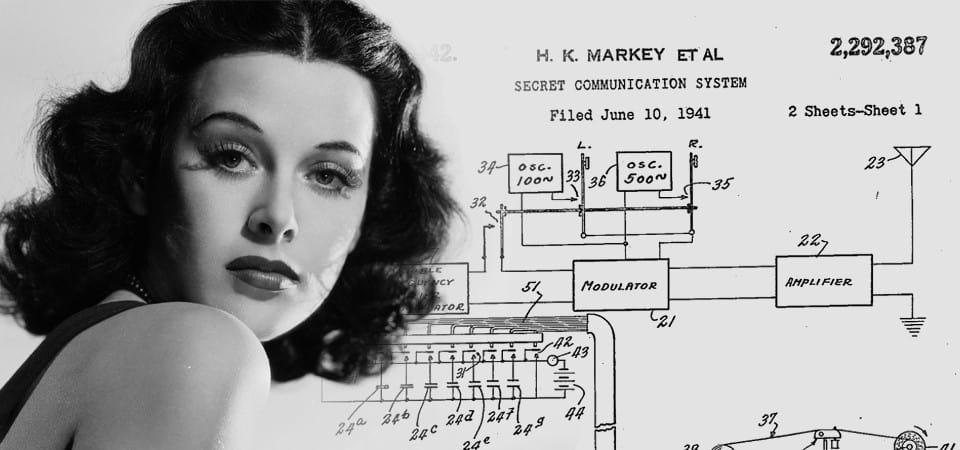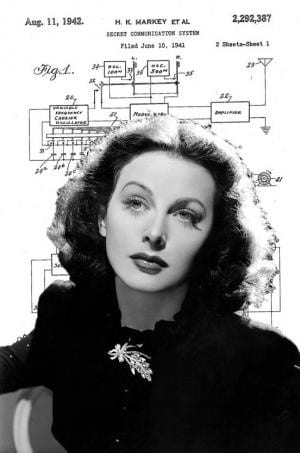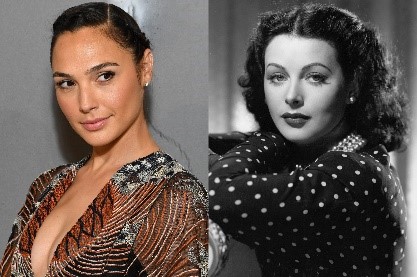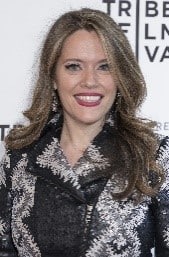
March is Women’s History Month, where we highlight the contributions and influences of women in history. So, let’s get our March Mathness on and celebrate women in STEM!
Austrian-born Hedy Lamarr (Hedwig Kiesler), an actress, film producer, scientist, entrepreneur, and tech pioneer, was a well-known movie star from the Hollywood Golden Age era and was called the “most beautiful woman in the world”. From the 1930s – 1950s, Hedy stared in 30 movies, shared the screen with Clark Gable, Jimmy Stewart, Bob Hope, and Spencer Tracy, and even owned a production company that produced several films. Hedy’s contributions to the growth of the entertainment industry are echoed throughout the halls of MGM Studios. However, Hedy’s greatest contribution was inventing an early technique for spread spectrum communication and frequency hopping – both of which are essential for wireless communication. The use of cell phones, Wi-Fi, and GPS would not be possible without this technology.

Hedy’s frequency-hopping technology/secret communication system was awarded Patent No
2,292,387. On it, she is listed as “H.K. Markey,” the name she assumed in
her second marriage. Her technology was used as part of a torpedo guidance
system for the U.S. Navy, which allowed the torpedoes to hop from one frequency
to another without detection. She was never compensated for her
frequency-hopping system.
Who better to know more about the significance of Hedy’s contributions other than Documentary Director, Alexandra Dean, the film maker of Bombshell: The Hedy Lamarr Story. It was an honor to speak with Alexandra and here is what she had to say:
How do you think this generation views Hedy’s contributions?
When I first started making the film, I felt like this generation largely didn’t know who she was, apart from the gen X’ers. I thought that was heartbreaking. Scientists working in the field of secret communications history told me that the story of this Hollywood Star creating a precursor to Wi-Fi, GPS and Bluetooth was no more than an urban legend. We didn’t know what to believe until we found the tapes of Hedy telling her own story. We were able to verify what she said through documents and the patent itself. I also found out that she had told her story to Robert Price, one of the first historians of secret communications, and he had redacted his own notes to omit the fact that she said she came up with the patent herself. He wrote instead that he thought she was a spy for the Nazis. There was a lot of institutional chauvinism and disbelief to overcome. Since the release of the documentary, she has become an icon that young women look up to as the epitome of a woman who had beauty and brains, a very powerful combination.
What can current and future STEMists learn from Hedy?
This is paraphrased from The Paradoxical Commandments: “You may feel unseen and even “kicked in the teeth” by people who don’t recognize your gifts, but do “you” anyway because it’s not in the accolades, but in the doing and in the giving that you find the meaning in your life.” I think that’s a wonderful message for people toiling away at a vaccine or a therapy to fight against Covid-19 because they are heroes, whether or not they are recognized for this achievement. Their work will find ways to reward them for their incredible service. The doing of it, the saving millions of lives, will be an enormous achievement.
Now that Hedy is an icon, can we expect to see more about her in the near future?

Yes, I am a co-producing a fictional series about Hedy Lamarr that is going into production this summer and will air on Showtime starring Gal Gadot, who is also an executive producer for the project.
I am quite sure more female contributors are missing from the public archives and the narrative of STEM history. Even though we have made strides, there is still a lot of work to be done. For starters, how are we changing the social networks within the scientific community? These networks are vital to obtaining grants for research, access to funding, and so on. Women are still largely excluded from these spaces – something as simple as men catching up for drinks after work, where informal networks are created to share valuable information. Without accountability, intentionality, and support for women in science, they will be less inclined to go and stay on the STEM path, which we know will hinder scientific progress and deprive the world of future innovations like those made by amazing women like Hedy.
So, the next time I connect to Wi-Fi to stream a movie, use Bluetooth on my cellphone, or my GPS to get home from work (don’t ask), I will thank Hedy Lamarr and you should too!

Alexandra Dean is an Emmy Award-winning journalist and a documentary director and producer, known for directing “Bombshell: the Hedy Lamarr Story,” which premiered at the Tribeca Film Festival in 2017. Dean wove hours of never-before-heard audio tapes of Lamarr with archival footage and interviews to shed light on the actress spurned as too beautiful to be smart. She has also written for Businessweek magazine and produced news-magazine documentaries and series for PBS and Bloomberg television, including the documentary “The Player”. She can be reached at @alexdeandirector on IG.